| Premium large SUV; Built in Japan |
|
|
| Good condition price range: $30,800 – $55,200* |
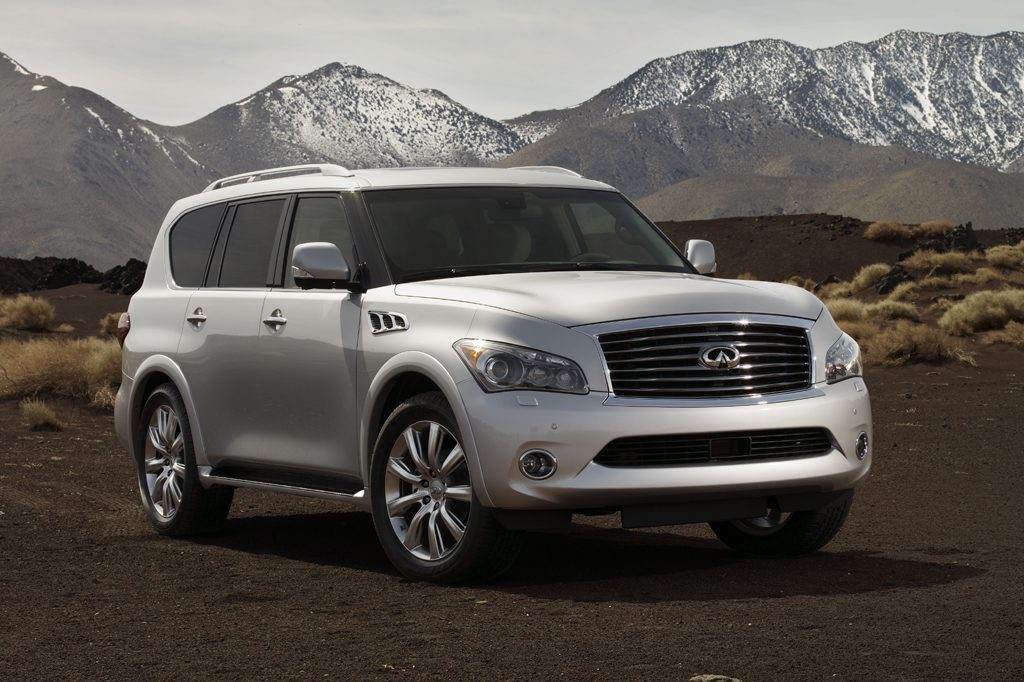
2011 Infiniti QX56 Front
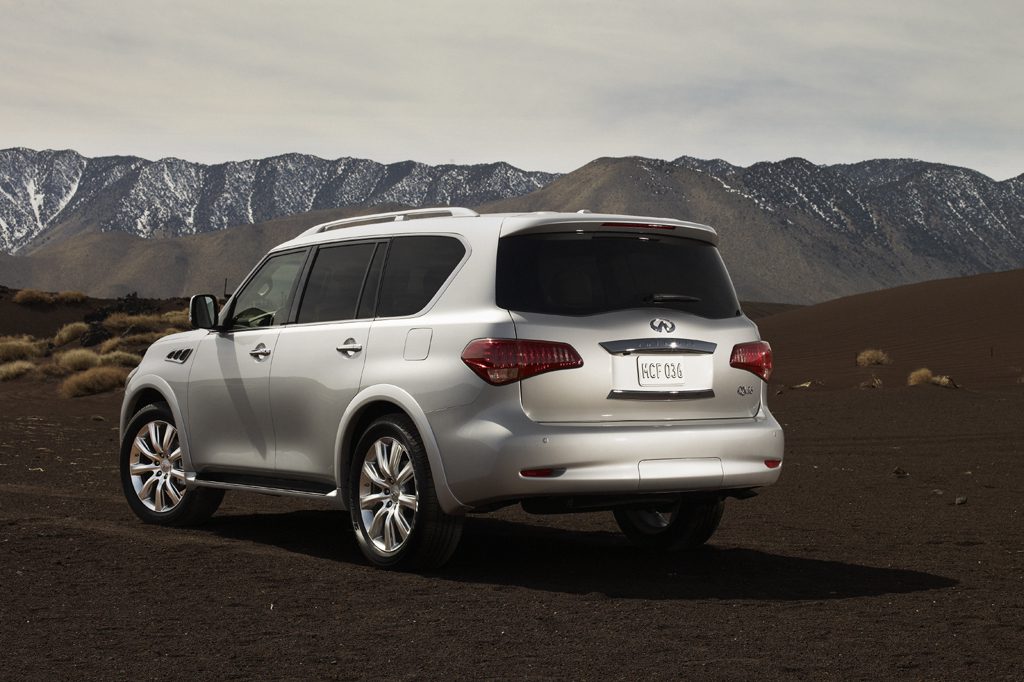
2011 Infiniti QX56 Rear
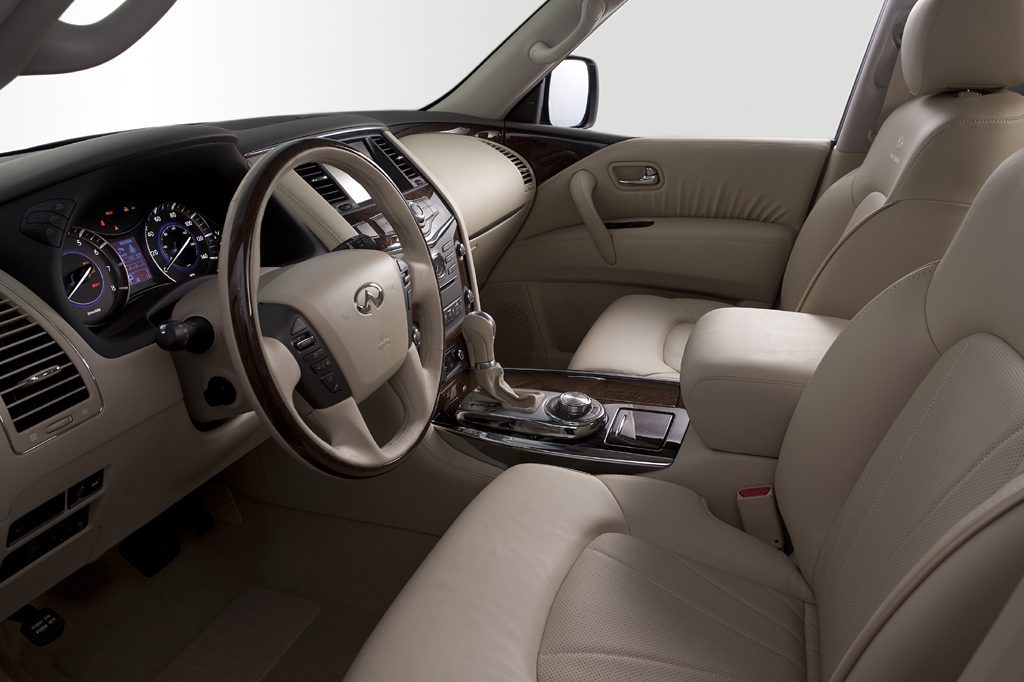
2011 Infiniti QX56 Interior
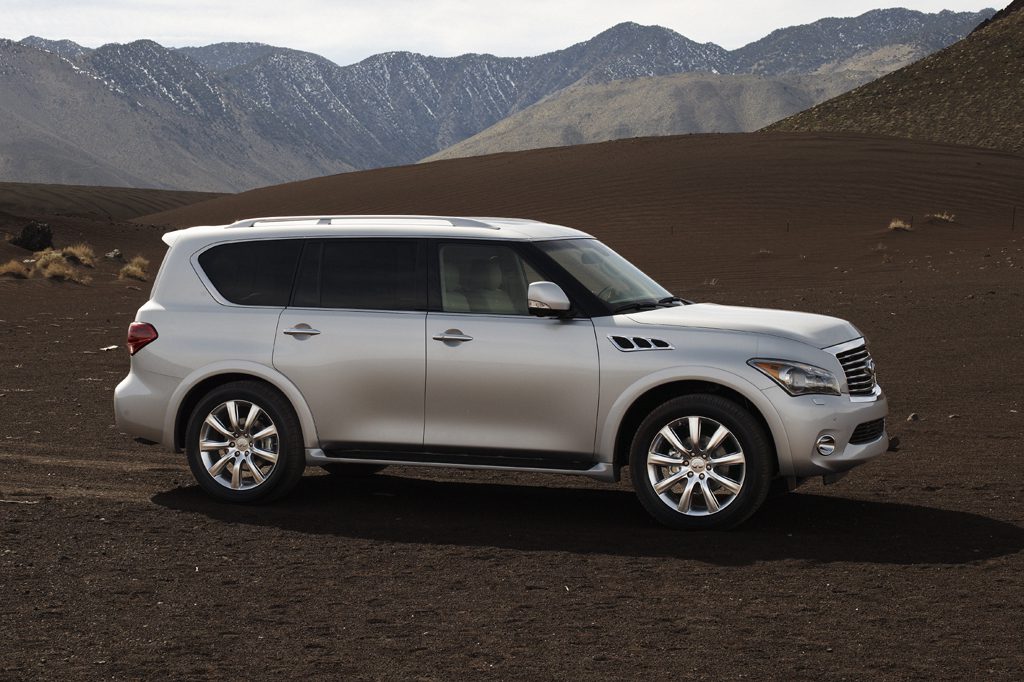
2011 Infiniti QX56 Profile
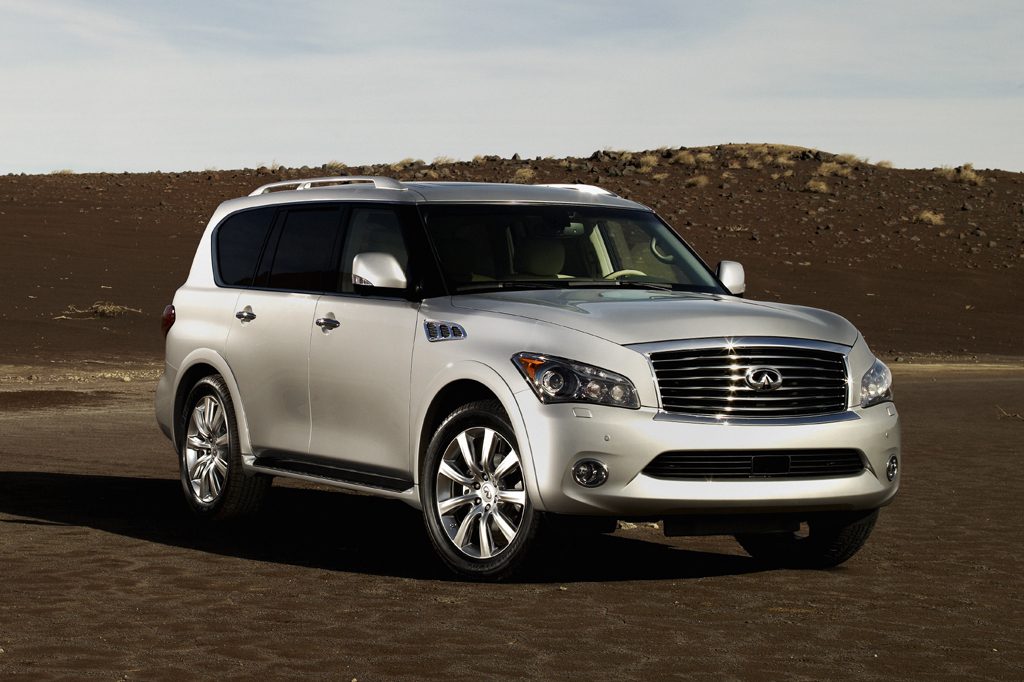
2011 Infiniti QX56
| Pros: |
|
| Cons: |
|
Infiniti’s redesigned QX56 impresses with a tastefully-finished interior and a smooth, well-controlled ride–especially with the available Hydraulic Body Motion Control System. Downsides include a load floor that isn’t flat in seven-passenger models, as well as the trade-offs in fuel economy and maneuverability expected of an SUV that’s this large. QX56 is much more visually restrained than the extroverted Cadillac Escalade, and hasn’t offered nearly as many options. Still, the QX56 is a very likable and capable premium-large SUV that deserves consideration from shoppers in this class. Note that the same collection of Infiniti warning systems that annoys on the M-series cars annoys here. Be aware that living with these aids may grow wearisome.
Overview
In addition to freshened styling, the redesigned Infiniti QX56 obtained more power for 2011. The QX56 shared elements of its basic design with the Nissan Patrol, a large SUV sold primarily in the Middle East. For 2011, QX56 was longer, wider, and lower than the model it replaced. Production of this premium-large SUV also shifted to Japan from the United States. The sole powertrain teamed a 400-horsepower, 5.6-liter V8 engine with a seven-speed automatic transmission. This replaced a 320-horsepower, 5.6-liter V8, coupled to a five-speed automatic. Infiniti’s QX56 was available in a single trim level, with either rear-wheel drive or four-wheel drive that could be left engaged on dry pavement and included a low-range gear for off-roading. Maximum towing capacity was 8,500 pounds. The name was changed to QX80 in 2014.
Standard safety features included all-disc antilock braking, traction control, an antiskid system, front side airbags, and curtain side airbags. A QX56 seated seven with second-row buckets, or eight with an available second-row bench. The power-folding third-row bench was split 60/40. A navigation system with real-time traffic and weather information, front- and rear-obstacle detection, hill-ascent control, and a surround-view camera that showed the entire circumference of the vehicle on the navigation screen, were standard. Dual-screen DVD entertainment was optional. A Deluxe Touring Package included 22-inch wheels (replacing the standard 20-inch wheels), ventilated front seats, heated second-row seats, and Infiniti’s Hydraulic Body Motion Control System, which was designed to reduce body lean in turns. A Technology Package included adaptive cruise control, lane-departure warning and prevention systems, blind-spot alert, and a collision-warning system. With its QX56, Nissan’s luxury division competed against such large SUVs as the Audi Q7, Cadillac Escalade, Lincoln Navigator, and Mercedes-Benz GL-Class.
Yearly Updates
| 2012 QX56 Little changed for the 2012 Infiniti QX56 except for a few option-package revisions, including addition of blind-spot intervention to the Technology Package. |
| 2013 QX56 The QX56 was little changed for the second year running, but its lengthy standard-features list added two new items for 2013: auto-dimming exterior mirrors and a Moving Object Detection (MOD) function. The latter extended the capabilities of the standard Around View Monitor camera system with its integrated front/rear obstacle detection. |
| 2014 QX80 The 2014 QX80 was formerly known as the QX56. Outside of the new name, the only change of note for 2014 was the addition of Backup Collision Intervention to the optional Technology Package. |
